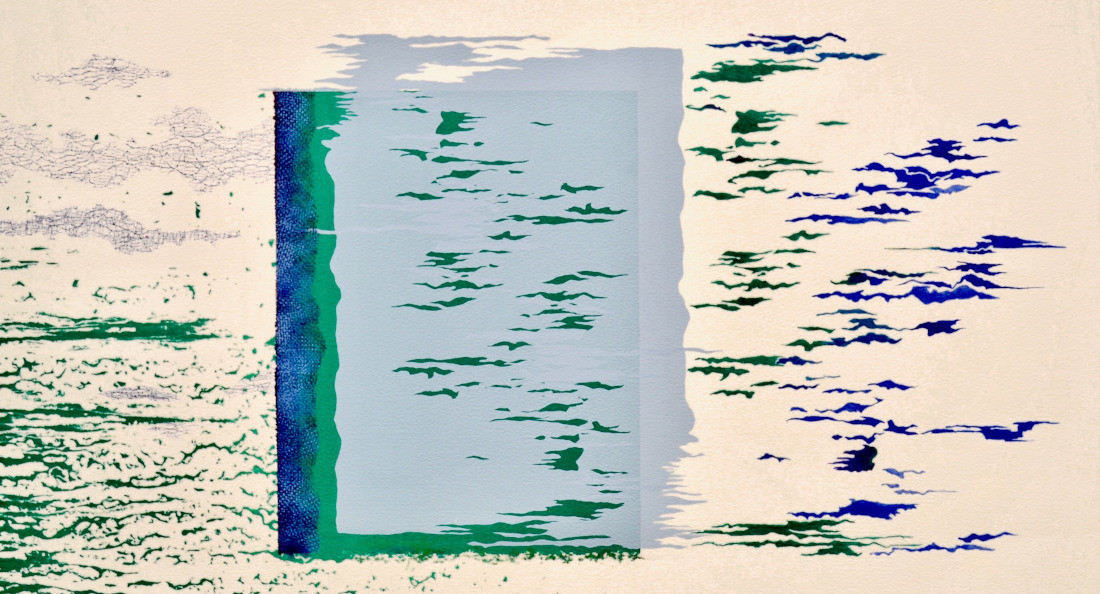The conversation of art
MHC Gallery exhibition has art imitate life and vice versa
Ekphrasis! Hold the gesundheits and recall classics class, where the term may have been embedded in the mind alongside a John Keats ode to an urn. For aesthetes looking for a more contemporary and interactive experience with the medium, MHC Gallery’s Brush Strokes & Bluewords has just what you need.
The latest exhibition at the Canadian Mennonite University’s in-house gallery, Brush Strokes & Bluewords is a collaboration between United Kingdom-based artist Pauline Aitken and Winnipeg-based literary artist Christine Stewart-Nuñez.
The art of ekphrasis, a Greek word denoting the practice of vivid descriptions of artwork, is showcased through Aitken’s mixed-media visual work and Stew- art-Nuñez’s poems.
Stewart-Nuñez, who is also a professor at the University of Manitoba, likens the show to a conversation through art, as both artists respond to each other’s work through their respective mediums.
“It’s a dialogue between my poetry and Pauline’s artwork,” she says.
Stewart-Nuñez explains that rather than mere illustrations of her poems, Aitken’s responses are more akin to translation.
“I saw a piece of her work, and I riffed off of it and wrote about it in a poem,” she says. “Typical ekphrastic definition ... I wrote this poem called ‘Site Planning,’ and then she did two more pieces related to it where she uses cobwebs. This is more of like a conversation, literally.”
Visitors to the gallery will see 21 pieces of Aitken’s art, which include watercolour, print work and sketches, paired closely with 18 of Stewart-Nuñez’s poems throughout the exhibition.
“At MHC Gallery, we believe that through artistic expression, we can learn about, know and respect one another,” Sarah Hodges-Kolisnyk, the MHC Gallery director, says.
“The ekphrasis featured in Brush Strokes & Bluewords is such a beautiful example of that sentiment: two artists with much distance between them engaging with each other in a relational, dialogic way that births something entirely new and special.”
Inspired by “body-mind phenomena” and drawing from personal experience, much of the exhibition is themed around bodily function, like Aitken’s visual piece “Dendron.” The creative collaboration came together holistically, as Stewart-Nuñez’s work was influenced by her son’s neurological disorder.
“Pauline had been doing all of this rich research and creative work around the brain and the heart. When we struck up this collaboration, she really started to respond to my poetry based on grappling with my son’s seizure disorder,” Stewart-Nuñez says.
“There are these really rich ways in which the body and the mind interact or affect each other. The poems speak to that pretty clearly.”
On March 21, MHC Gallery will celebrate World Poetry Day with a slate of readings from published poets, including Stewart-Nuñez. CMU students will also have the opportunity to showcase their own ekphrastic poetry alongside the roster of writers.
“Given the exhibit’s exploration of not only a variety of media but wide-ranging topics, it’s also just a great example of the kinds of radical dialogue and relational ways of knowing that we hope to foster on campus,” Hodges-Kolisnyk says.
Brush Strokes & Bluewords runs until April 13 at MHC Gallery (600 Shaftesbury Blvd.). For more info, visit cmu.ca/gallery.
Published in Volume 78, Number 22 of The Uniter (March 21, 2024)








